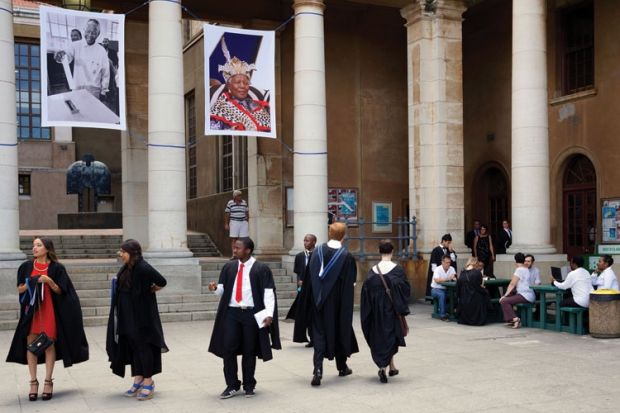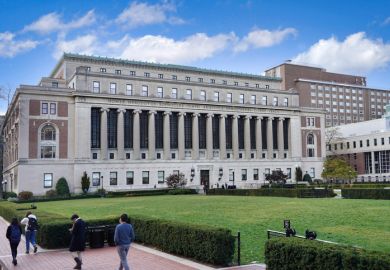Source: Alamy
‘Irrelevant’: merger has not helped South Africa’s recovery, says Professor Hall
A decade ago, South Africa was in the middle of implementing a plan to merge 26 of its institutions into 11 in a bid to overcome the racial segregation that blighted much of the higher education sector.
After the end of the apartheid regime in 1994, the country was left with traditional universities intended for white students, a much weaker set of institutions for black students, and others set aside for Afrikaans speakers.
But the huge merger process that followed, which it was hoped would heal some of the scars of racial segregation, has actually been “irrelevant” to the country’s recovery from apartheid, according to a study by a UK vice-chancellor.
Martin Hall, who leads the University of Salford in the UK and also holds the post of emeritus professor at the University of Cape Town, argues that the problems afflicting South African higher education at the start of the process still remain.
Between 2000 and 2010 the country’s gross enrolment rate grew from 15 per cent to 18 per cent, but “while white participation is comparable with developed country levels, the participation rate for black students is persistently low”, says Professor Hall in a paper entitled Mergers in South Africa and Post-Apartheid Reconstruction: the First Decade.
The paper adds that because already enrolled students had to be taught the remainder of their original courses even after their institutions merged – a process that would take a minimum of four years – this meant that some newly merged universities had to offer two sets of academic programmes at the same time, but without any extra funding.
Although some mergers were relatively successful, the paper acknowledges, some have been disastrous. A 2011 audit of the Walter Sisulu University for Technology and Science, created from three other institutions, found that the union had been a “difficult and painful process” with “significant resistance” from staff.
After publication of this report, the government appointed an independent assessor to inspect the merged institution, and found that it was “in crisis”, “riddled with conflict” and affected by “constant battles” between management, staff and students.
As part of this conflict, staff had been taken hostage, locked out of buildings, barricades had been erected to block entrances, while students had torched university buses.
Professor Hall acknowledges that where mergers have failed, they were already facing “considerable challenges” before the process. But he points out that they were attempted where campuses were huge distances apart and the pairings lacked a “strong partner”.
An investigation conducted last year by the country’s Council on Higher Education concluded that the undergraduate curriculum is still “beyond repair, and needs comprehensive revision”, the paper states.
While it is “clear” that mergers “broke the mould of racial segregation” they have “done little” to address the problems the policy was designed to solve, Professor Hall says.
Register to continue
Why register?
- Registration is free and only takes a moment
- Once registered, you can read 3 articles a month
- Sign up for our newsletter
Subscribe
Or subscribe for unlimited access to:
- Unlimited access to news, views, insights & reviews
- Digital editions
- Digital access to THE’s university and college rankings analysis
Already registered or a current subscriber? Login





